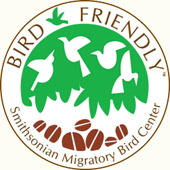Coffee Glossary: A Glossary Of The Different Coffee TypesPage 1: Terms Beginning With A To B This is Page 1 of an 6-page article. Click on the red links below to visit other pages. This glossary is protected by copyright and cannot be reproduced in whole or part. You are welcome to link to it.
|
 Have a fresh cup! Photo © Julien Bastide | Dreamstime. Have a fresh cup! Photo © Julien Bastide | Dreamstime. |
|||
| Acidity: A highly-desirable quality in coffee, referring to the degree of flavor in the cup of coffee. In fine coffees, acidity results in a pleasant sharpness or brightness. Acidity refers to the coffee’s flavor and, similar to describing acidity in wine, is assessed as lively, moderate, flat or dull. All good coffees have some acidity, but to a varying degree. The darker a coffee is roasted, the more its acidity dissipates. Not to be confused with the ph level (the pH of coffee is about 5), “palate acidity” is the brightness of flavor. Without it, coffee tastes flat and dull. Coffees with good acidity taste bright and crisp. |
||||
| Acrid: The unpleasant, tar-like taste, best known as coffee that has been sitting for too long on the hotplate. |
||||
| Aftertaste or Finish: The residual taste left in the mouth after swallowing. Characteristics can range from sweet or spicy, smoky, light, heavy or long lasting. |
||||
| Amaretto Coffee: An after-dinner beverage made by mixing one or two tablespoons of amaretto liqueur into a cup of strong coffee, which is then topped with whipped cream and garnished with toasted almond slivers. |
||||
| American Roast (Regular Roast): A light to medium roast that makes light to medium-body coffee. The beans themselves are a medium-brown color. | ||||
| Arabica: Coffea arabica is considered to be the finer of the two commercially cultivated coffees—the flavor is more refined. Two-thirds of the world’s specialty coffee is Arabica, which has a much more delicate flavor than the hardier Coffea robusta. The Arabica coffee plant grows best at altitudes between 3000 and 6000 feet; it favors cooler temperatures between 65°F to 75°F. Arabica beans prefer well-drained volcanic soil, two hours of sunshine a day and shade. Cultivation at lower altitudes invites attack from various parasites. See hard bean. Aroma: The fragrance of brewed coffee, which can be characterized as “floral,” “winey,” “smoky,” et al. Aroma is generally more a function of the roast than the bean. A lighter roast will have a lighter coffee aroma, a very dark roast will smell like smoke and charcoal. Automatic Drip: Coffee brewers that automatically heat the water and filter it through the coffee.
|
 Arabica coffee beans. Photo courtesy of SXC. |
|||
| Baggy: A negative characteristic, referring to beans that have been improperly stored for too long in poor-quality jute or burlap bags, and have taken on flavors from the storage material. Also used to describe under-roasted coffee that’s poorly stored and taken on similar mildewy qualities. |
||||
| Baked: A bready or biscuity taste from coffee that’s been roasted too slowly or at too low a temperature. |
||||
| Balanced: A characteristic that indicates a complexity of flavors and aromas although one quality does not stand out above another. A well-balanced coffee will have good acidity, full body, and some fruit. As with wine, some people prefer a preponderance of one factor over another—high acid, light or heavy body, very fruity versus no fruit, etc. |
||||
| Barista: A professional trained in the art of making coffee drinks. |
||||
| Belgian Coffee: An after-dinner beverage made by folding a beaten egg white into whipped cream, mixing it into a cup of coffee, and garnishing the froth with grated bittersweet chocolate. |

|
|||
| Bird Friendly: Under a program established by the Smithsonian Institution to protect the habitat of songbirds in rapidly-deforested coffee-growing regions, Bird Friendly coffee is shade grown as well as organic. Companies selling these coffees contribute 25 cents per pound sold to the Smithsonian Migratory Bird Center to support research and conservation programs. See shade-grown coffee. Bitter: An over-roasted coffee that produces a harsh, unpleasant aftertaste. Black Coffee: Coffee prepared by any method (drip, percolated, press, e.g.) that is consumed plain, without milk, sweetener or other additive. |
||||
| Blend: A mixture of one or more varieties or species of coffee beans. The beans may be mixed before or after roasting. |
||||
| Bright: A characteristic of fine coffees. Describes a lively, sparkling taste and appearance. Related to the level of acidity. |
||||
| Body: How heavy a coffee feels in your mouth—the sense of thickness. Body is the result of the amount of sediment or oil present in the coffee. It is described as light, medium, full, or very full; and will vary depending on the origin of the coffee and the brewing method. Coffees with a heavier body have more complexity of flavor. Body is a counterpoint to acidity: The same bean or cup of coffee won’t have both a lot of acidity and a lot of body. To evaluate the body, sip the coffee and let it rest on the tongue before swallowing. See also Mouthfeel.
Bouquet: The smell of the coffee grounds.
|
||||
| Breve: An espresso-based beverage that substitutes half and half for milk. For example, a Cappuccino breve would be made exactly the same way as a regular cappuccino, except half and half would be steamed and frothed in the place of the milk. There’s no direct translation: breve is the Italian word for “short”; half-and-half is latte col 50% di panna, or “milk with 50% cream.” See our Espresso Glossary for more espresso definitions. Buenaventura: Spanish for “good fortune” and named after a Colombian port, a dark, rich gourmet coffee with soft winey undertones blended from the finest beans from Central and South America. Burnt: Coffee that has been over-roasted and has taken on a charcoal, ashy flavor. |
 Photo by Ivan Freaner | SXC.
|
|||
|
Buttery: A smooth, rich flavor and texture characteristic of some coffees, particularly those from Indonesia. Continue To Next Page, Terms Beginning With C |
||||
© Copyright 2005-2026 Lifestyle Direct, Inc. All rights reserved. All images are copyrighted to their respective owners.